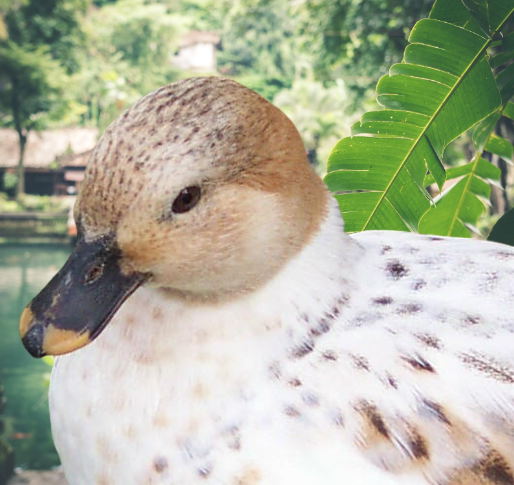The Mallard Duck was used as a foundation for the creation of the Call Duck through the process of selective breeding. They were first invented in the Netherlands in the early 1600s and now have spread throughout the world. However, they declined in popularity and became relatively rare until breeding initiatives revived them in the twenty-first century. Modern Call Ducks often are created in the British Isles from the remains of Dutch Call Duck lineages.
A Call Duck is a domesticated bantam breed of duck that is primarily maintained as a decorative or pet bird. A call duck's appearance is similar to that of other duck species, although it is noticeably smaller. The sounds and quacks of call ducks were originally employed in hunting to lure wild ducks toward the hunter's weapons. This tradition is therefore replaced almost entirely by artificial duck calls, and Call ducks are now largely maintained as pets.
Call Ducks are cute, sociable, and sassy. They are available in a vast array of hues, all of which are equally adorable. A Snowy Call duck comes in a green head with a neck that ranges in hue from white to green. Its tail and stern are black, while the rest of its body is a striking claret with white lacing. Its wings are grey. The snowy color of the Call Duck is a remarkable variation of the pattern of the Gray duck.
Snowy Call Ducks Male vs Female Difference
Males and females are distinctive in many ways. Males are larger than their female counterparts, lack a voice, and have more vibrant colors. The beaks of both Call Ducks are very small, and their claws are a bright yellow-orange. There are numerous color variants, some of which are extremely unusual. The most frequent varieties are white, wild, and spotted.

The males share many characteristics with Grays, such as they also have an abundance of white lacing, which brings out the beauty of their wine-colored breast feathers. Females are also visually appealing, typically in more modest brown and gold tones. Their entire plumage is stippled and intertwined with elaborate and complex patterns of opposing colors.
The female Snowy plumage pattern is complicated, and combining all of those components in one bird can often drive a breeder insane. It's important to note that after working on the color pattern for at least two decades, Graham Oakford never thought he had successfully produced a single bird of either sex whose plumage color fitted all aspects together properly. The difficulties of dealing with the Snowy are made clear when the criteria for appropriate type and size are taken into account.
The most glaring issue with male plumage is the rarity of seeing a specimen with optimum coloration. The flanks are either overly dark, with inadequate lacing (the more common case), or they lack any discernible claret color altogether. Oftentimes, the speculum is not as noticeable as it should be because it is too subtle or because it consists of too few secondary structures. It is exceedingly challenging to locate a male that satisfies all of the requirements, particularly when one considers the fact that males show a propensity to be overweight and can exhibit other Call body type defects.
The female Snowy's coloration consists of delicate stippling and lacing on the breast, side, and head. Body parts with either too little color (nearly white) or too much color are the most frequent issue with the female's plumage color.









0 Comments